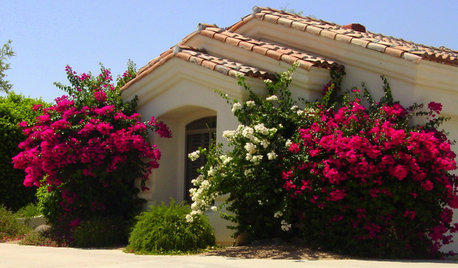Planting tomatoes ON TOP of the soil outdoors - yay or nay?
organic_wonderful
13 years ago
Related Stories

GARDENING GUIDESHouzz TV: Make a Worm Bin for Rich Soil and Happy Plants
A worm-powered compost bin that can fit under a sink turns food scraps into a powerful amendment for your garden. Here’s how to make one
Full Story
EDIBLE GARDENSSummer Crops: How to Grow Tomatoes
Plant tomato seedlings in spring for one of the best tastes of summer, fresh from your backyard
Full Story
GARDENING GUIDESHow to Stop Worrying and Start Loving Clay Soil
Clay has many more benefits than you might imagine
Full Story
GARDENING GUIDESGet on a Composting Kick (Hello, Free Fertilizer!)
Quit shelling out for pricey substitutes that aren’t even as good. Here’s how to give your soil the best while lightening your trash load
Full Story
FARM YOUR YARDHow to Build a Raised Bed for Your Veggies and Plants
Whether you’re farming your parking strip or beautifying your backyard, a planting box you make yourself can come in mighty handy
Full Story
SPRING GARDENINGInspiring Raised Beds for Fall and Spring Planting
Make Your Next Vegetable Garden Even Better with Beautiful Boxes and Paths
Full Story
GARDENING AND LANDSCAPINGBuild a Raised Bed to Elevate Your Garden
A bounty of homegrown vegetables is easier than you think with a DIY raised garden bed to house just the right mix of soils
Full Story
LANDSCAPE DESIGNGreat Design Plant: Sun-Loving Bougainvillea Showers Yards With Color
Bring unbeatable vibrancy to a garden or wall with this unfussy and trainable shrub packed with colorful bracts
Full Story
GARDENING GUIDESNew Ways to Think About All That Mulch in the Garden
Before you go making a mountain out of a mulch hill, learn the facts about what your plants and soil really want
Full Story
GARDENING GUIDESCommon Myths That May Be Hurting Your Garden
Discover the truth about fertilizer, soil, staking and more to keep your plants healthy and happy
Full StoryMore Discussions






tapla (mid-Michigan, USDA z5b-6a)
organic_wonderfulOriginal Author
Related Professionals
Horsham Landscape Architects & Landscape Designers · North New Hyde Park Landscape Architects & Landscape Designers · Alamo Landscape Contractors · Point Pleasant Landscape Contractors · Saint Paul Landscape Contractors · Stallings Landscape Contractors · Carpinteria Solar Energy Systems · Dracut Solar Energy Systems · Fort Collins Window Contractors · Lees Summit Window Contractors · Bay Village Window Contractors · Godfrey Window Contractors · Marinette Window Contractors · San Juan Capistrano Window Contractors · Bothell Fence Contractorsgreenman28 NorCal 7b/8a
tapla (mid-Michigan, USDA z5b-6a)
organic_wonderfulOriginal Author
organic_wonderfulOriginal Author
tapla (mid-Michigan, USDA z5b-6a)
organic_wonderfulOriginal Author
tapla (mid-Michigan, USDA z5b-6a)
tigerdawn
onafixedincome
organic_wonderfulOriginal Author
greenman28 NorCal 7b/8a
tapla (mid-Michigan, USDA z5b-6a)
onafixedincome
tapla (mid-Michigan, USDA z5b-6a)
pattypan
pattypan